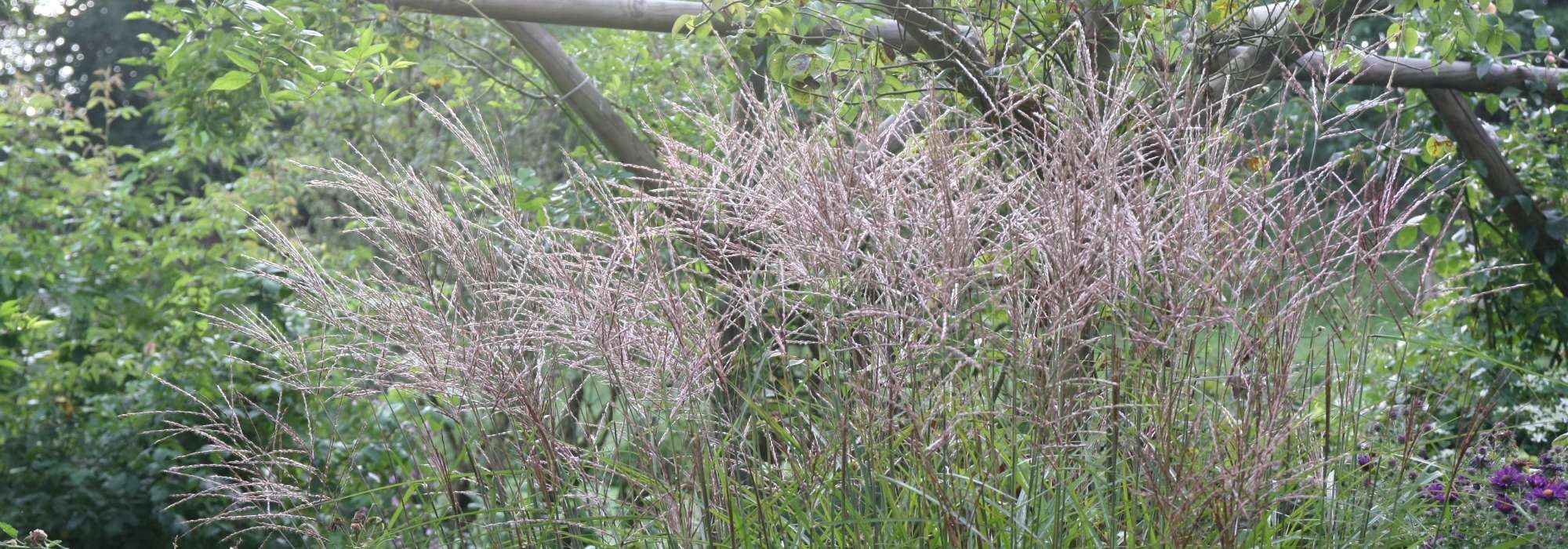
Planting, growing and caring for Miscanthus
Contents
Miscanthus, in a nutshell
- Miscanthus stems offer a wide range of heights to suit every need
- Sun or partial-shade plants, miscanthus form graceful, flowing clumps that rustle in the slightest breeze
- They flower in summer or autumn with light, feathery spikelets
- After flowering, miscanthus stems and flowers dry beautifully and remain to adorn your garden throughout winter
A word from our expert
Easy to maintain and freefrom any disease, Miscanthus, also known as elephant grass, is a perennial grass that perfectly suits all types of gardens.
Miscanthus have an extraordinary adaptability to all kinds of soil, the most important being light, at least some sun for a good part of the day.
Most species form well-defined clumps; some, however, can send out vigorous rootstocks (Miscanthus Sacchariflorus).
From small miscanthus of about 60 cm to the largest around 3 metres, heights of these grasses vary.
Their flowering, set late in summer or in autumn, takes the form of light, fluffy spikelets with golden, silvery, brown or pink hues. In sunlight, their flower spikes create a truly spectacular display in the garden. The rustle of leaves and stems stirred by the wind perfectly completes the scene.
Chinese miscanthus are decorative even in winter thanks to their culms and the flowers that dry gracefully with the onset of winter.
Miscanthus suit contemporary gardens, exotic gardens, wild gardens, English gardens and even riverbanks and ponds. They can be used in beds, mixed borders or as hedging.
For maintenance, nothing could be easier: simply prune clump to ground level at end of winter.
Easy to maintain, perennial and decorative almost all year round.
Description and botany
Botanical data
- Latin name Miscanthus
- Family Poaceae (formerly Gramineae)
- Common name Chinese silvergrass, elephant grass, miscanthus
- Flowering summer to autumn
- Height 0.60 m to 3 m
- Exposure full sun to partial shade
- Soil type all soils
- Hardiness depending on variety from -5°C to -30°C
Miscanthus are herbaceous perennials of family Poaceae, formerly called Gramineae. Term miscanthus comes from Greek contraction mischos meaning “stem” and anthos meaning “flower”. This probably refers to the particular shape of the flowers borne on ‘stems’ arranged in a fan. In botany, these stems bearing the flowers are called peduncles.
Miscanthus are also known as Chinese silvergrass, eulalia or elephant grass. These ornamental perennial grasses range from 60 cm to 3 metres tall.
Native to mountains or marshes of Asia and even Africa, there are about twenty Miscanthus species and roughly a hundred different varieties. Their flowing, architectural, upright habit evokes bamboo or giant reed. However, they should not be confused with the similar cattail of genus Typha. Some Miscanthus species originate from marshes and therefore particularly appreciate banks and wet habitats.
Growth of Miscanthus is fairly late. It begins in late April to early May, depending on region, with formation of erect leafy stems. Size, colour and height of the hollow stems called culms vary according to variety.
Leaves are deciduous, linear-lanceolate or ribbon-like.
Older cultivars (‘Gracillimus’, ‘Variegatus’, ‘Zebrinus’) require a long growing season to flower, if they flower at all. Recent notable introductions with shorter growing seasons are now available.
- Smallest varieties (0.80 to 1.30 m): Miscanthus ‘Adagio’, ‘Arabesque’, ‘Ghana’, ‘Little Miss’, ‘Little Zebra’, ‘E Lepage’… for small gardens
- Medium sizes (approx. 1.40 to 2.20 m): Miscanthus ‘Graziella’, ‘Flamingo’, ‘Rotsilber’, ‘Kleine Silberspinne’, ‘Etincelle’, ‘Ferner Osten’…
- Tallest (around 3 m): Miscanthus floridulus, giganteus, sacchariflorus
In summer or autumn, the terminal flowers appear as spikelets in shades of pink, white, silver, gold, purple, cream or red. These spikelets are small spikes of flowers directly inserted on the main axis of the culm, thus forming a compound spike. They need warmth to flower.
At end of autumn, stems and leaves of Miscanthus dry and thus persist for much of winter. Neither truly evergreen nor truly deciduous, this is referred to as marcescent foliage. Thus Miscanthus remain decorative through much of winter.
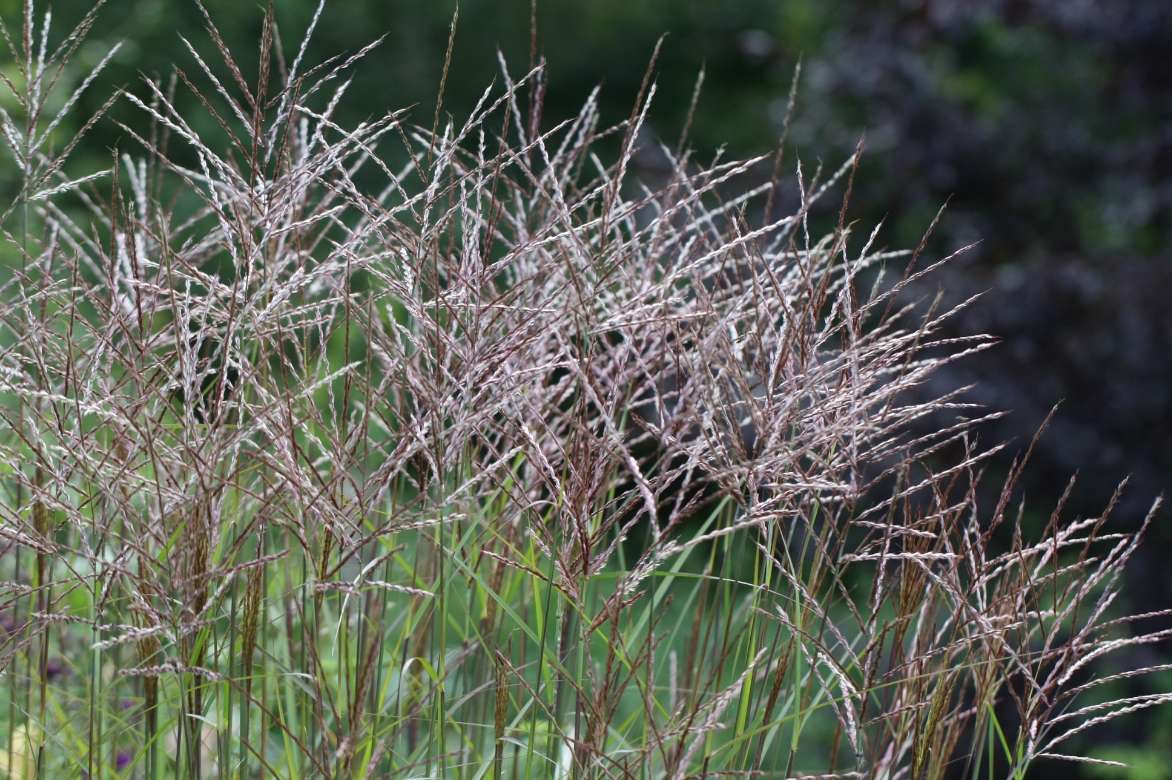
Miscanthus are either tussock-forming or rhizomatous. For the former, the clump develops by producing new stems concentrically around the parent crown. Rhizomatous species develop by expansion of the rootstock more or less evenly. The latter are more invasive and spread more easily by producing shoots (Miscanthus sacchariflorus).
It is possible to make dried bouquets with their stems and dried flowers. To do so, simply cut stems close to the ground with shears.
Valued by birds for collecting twigs and serving as refugia, Miscanthus create habitats favourable to wildlife.
No toxicity is known in Miscanthus.
Botanical species
- Chinese silvergrass – Miscanthus sinensis
This species is among the most common and most planted in gardens. Native to Asia, it is available in a multitude of varieties with varying colours and heights. The type species has escaped gardens and become naturalised, sometimes becoming invasive.
Read also
Grasses: which variety to choose?Main species and varieties of Miscanthus
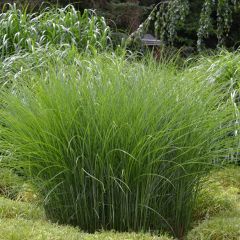
Miscanthus sinensis Gracillimus - Silvergrass
- Flowering time October to December
- Height at maturity 1,50 m
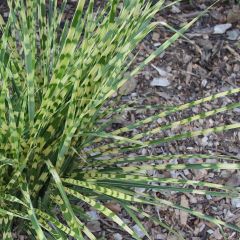
Miscanthus sinensis Gold Bar - Silvergrass
- Flowering time October to December
- Height at maturity 80 cm
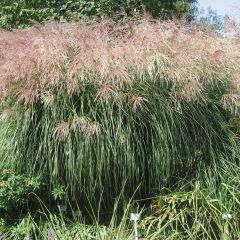
Miscanthus sinensis Graziella - Silvergrass
- Flowering time September to November
- Height at maturity 1,50 m

Miscanthus sinensis Ghana - Silvergrass
- Flowering time September to November
- Height at maturity 1,40 m

Miscanthus sinensis Grosse Fontäne - Maiden Grass - Silvergrass
- Flowering time October to December
- Height at maturity 2 m
Discover other Miscanthus
View all →Available in 0 sizes

Available in 2 sizes
Available in 3 sizes
Available in 1 sizes
Available in 1 sizes
Available in 1 sizes
Available in 2 sizes
Available in 2 sizes
Available in 1 sizes
Available in 3 sizes
Planting miscanthus
Where to plant miscanthus?
Choosing location for miscanthus is a long-term decision because most are difficult to remove due to their particularly invasive rootstock. Choose a sunny or partially shaded position.
Miscanthus are quite resistant to wind and sea spray. They can be planted as specimens, as low or tall hedges, as windbreaks or in borders.
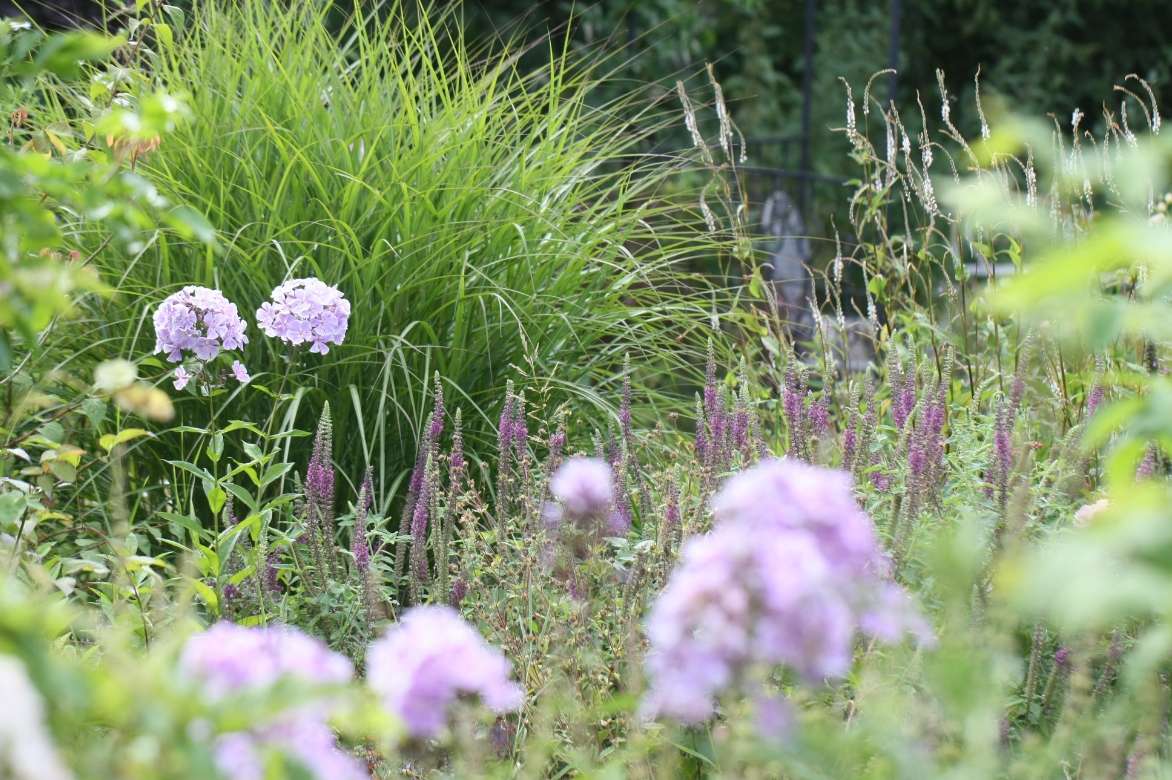
When to plant miscanthus?
Planting miscanthus is carried out mainly during vegetative period, in spring. Avoid planting during frosts or extreme heat.
How to plant miscanthus?
Respect plant’s spread at ripeness, which ranges from 0.50 m to 3 m depending on variety.
Here is how to plant miscanthus:
- Leave rootball of your miscanthus immersed while preparing the hole.
- Dig a hole three times size of rootball or of root system.
- Mix excavated soil with an equal quantity of compost.
- Fill half of the hole with this enriched soil mix.
- Remove stump from immersion and place stump at centre of hole about 1 cm below soil level. To check depth of the stump relating to root, you can use a wood board or a handled tool.
- Fill remainder of the hole with your soil-and-compost mix.
- Firm soil.
- Water thoroughly.
Make sure to water during first summer. Shoot growth is fairly rapid.
Pot growing suits it too, provided large containers are used and smaller varieties are planted: discover our advice in How to grow a Miscanthus in a pot?
Read also
Planting grassesMiscanthus care
Very low-maintenance, Chinese reeds are free from diseases and pests. Simply prune them to ground level at the end of winter, around March. For this, use a shear for the finer varieties and a pruning shear for the thicker varieties. Cut stems can be used as mulch in your garden. They then produce new stems from May onwards.
During summer and autumn, it is advisable to remove unsightly, broken or damaged stems by cutting them back to ground level.
After a few years, clumps tend to thin out at the centre of the stump, and it is then necessary to divide them.
→ Also read our advice sheet : Diseases and parasitic pests of ornamental grasses.
Multiplication: division
Like most Poaceae, miscanthus are best propagated by division. It is the easiest method and has a high success rate. Division is carried out in spring on a plant at least 4 to 5 years old. To divide your miscanthus, having cut the dried stems as low as possible :
- Use a saw. After lifting the clump, cut it with a large-toothed saw into as many pieces as possible and replant the sections immediately.

Division of a miscanthus
- Another technique is to give axe blows using a mallet, making a cross so the clump is divided into four. Then use a spade to lift your miscanthus quarters easily.
We recommend cutting the relating to root clump into pieces of at least 20 cm.
Sowing miscanthus is possible but the very light seeds blow away easily and germinate poorly. Moreover, sowing is not always true to the parent plant. It is not recommended.
Use and companion planting in the garden
Planting combinations with miscanthus are very easy. To balance a border, you can pair Chinese silvergrass with flowing, flowering perennials such as cosmos, echinacea, Buenos Aires verbena, tansy or perovskias. You can also include more structural flowering perennials such as asters, Sedum spectabile, Italian everlastings, artemisas, kniphofias, blue agapanthus or ornamental alliums.
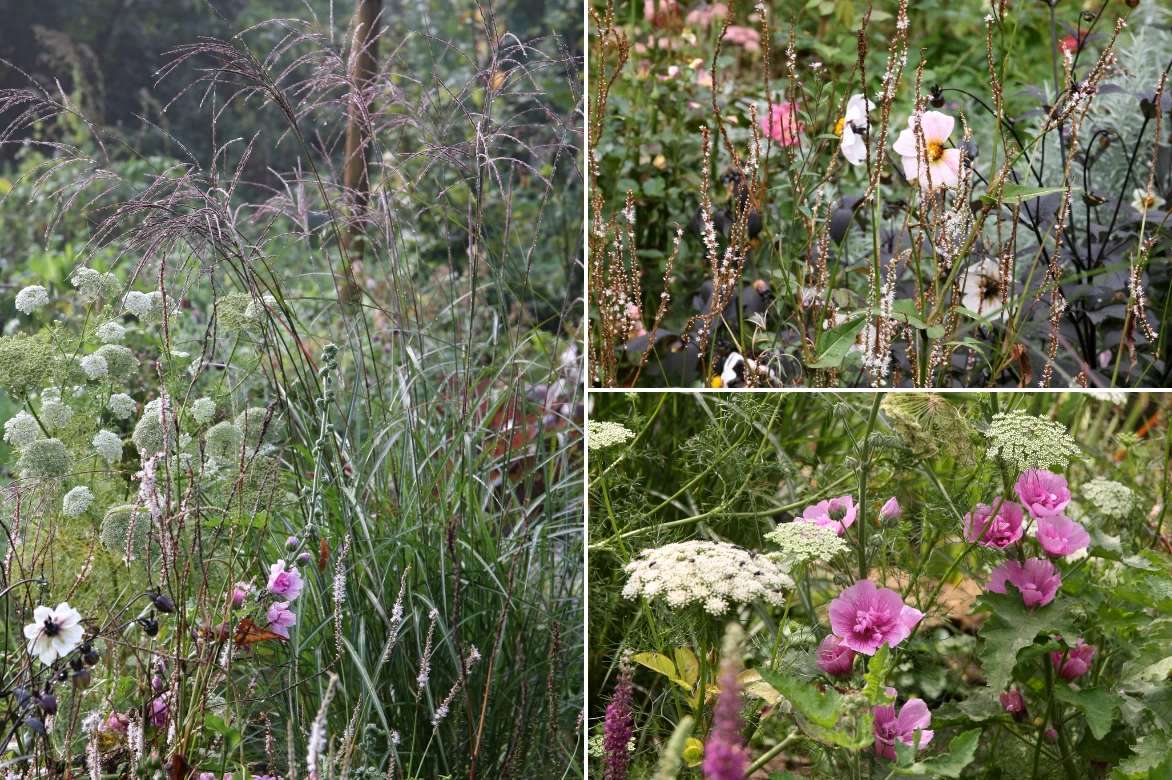
An example of a natural combination: Miscanthus sinensis ‘Purple Fall’ (varieties similar to ‘Dronning Ingrid’ or ‘Ferner Osten’), Persicaria amplexicaulis ‘Alba’, Dahlia ‘Twinning’s After Eight’, Ammi visnaga, Alcalthaea ‘Parkrondell’ (variety ‘Parkallee’ would also work well)
You can also create a dry garden or a grass garden using other Poaceae such as fescue, Imperata, Carex or bottlebrush grass.
To create a winter border, pair miscanthus with red-barked dogwoods to set off the red stems of dogwoods against miscanthus foliage. Hoarfrost and snow are beautiful on the spikelets of miscanthus.
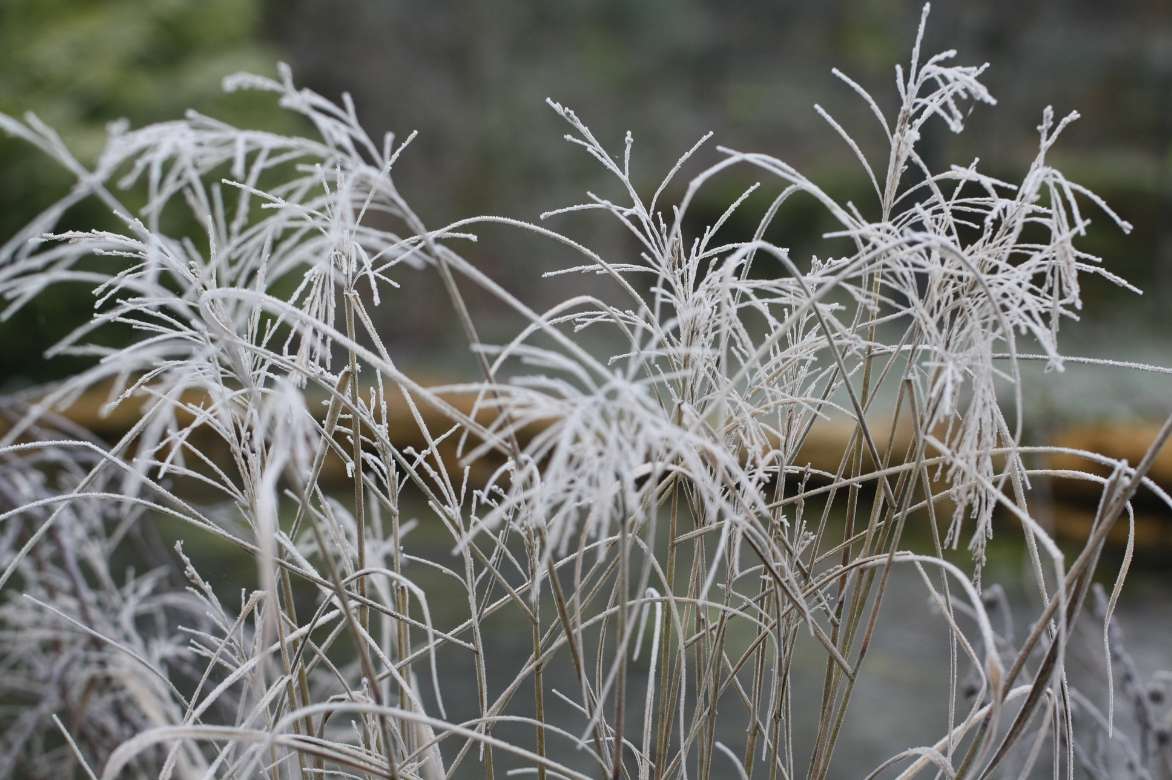
Miscanthus spikelets magnified by frost in winter !
Tall miscanthus stems can serve as supports for certain climbing plants such as morning glories.
Larger varieties are ideal for creating a backdrop to a border or a dense screen.
→ Discover nine more ideas for pairing with Miscanthus in our advice sheet !
Did you know?
In agro-industry, a variety of miscanthus, Miscanthus x giganteus, is used as an alternative fuel to wood for heating. It results from cross-breeding between Miscanthus sinensis and Miscanthus sacchariflorus. Its energy yield appears promising for thermal power stations and even for biofuel production.
Miscanthus are also valued in permaculture for their multiple uses :
- Used as mulch in gardens and a rich source of silicon
- Used as insulation in homes
- Makes a good litter layer for livestock, chickens…
- Favours wildlife, notably birds that shelter in it and collect twigs for nests
- Cut stems of taller varieties are used in the garden as stakes or supports for lightweight plants
- Used for phytoremediation in ponds
Useful resources
- Our complete collection of Miscanthus
- Discover several ideas for pairing with Miscanthus
- How to choose the right Miscanthus
- Discover the best varieties of Miscanthus, 10 large Miscanthus to discover, and Miscanthus: a selection of varieties for pots
- Our tutorial: When and how to prune Miscanthus?
- Our video tips: Dividing an ornamental grass
- Our video tips: How to create a beautiful perennial border?
- Discover Christine’s article on plumed inflorescences
- Discover hardy grasses
- Learn more about grasses with variegated foliage
- XXL grasses: must-have varieties to add volume to borders
- Subscribe!
- Contents
































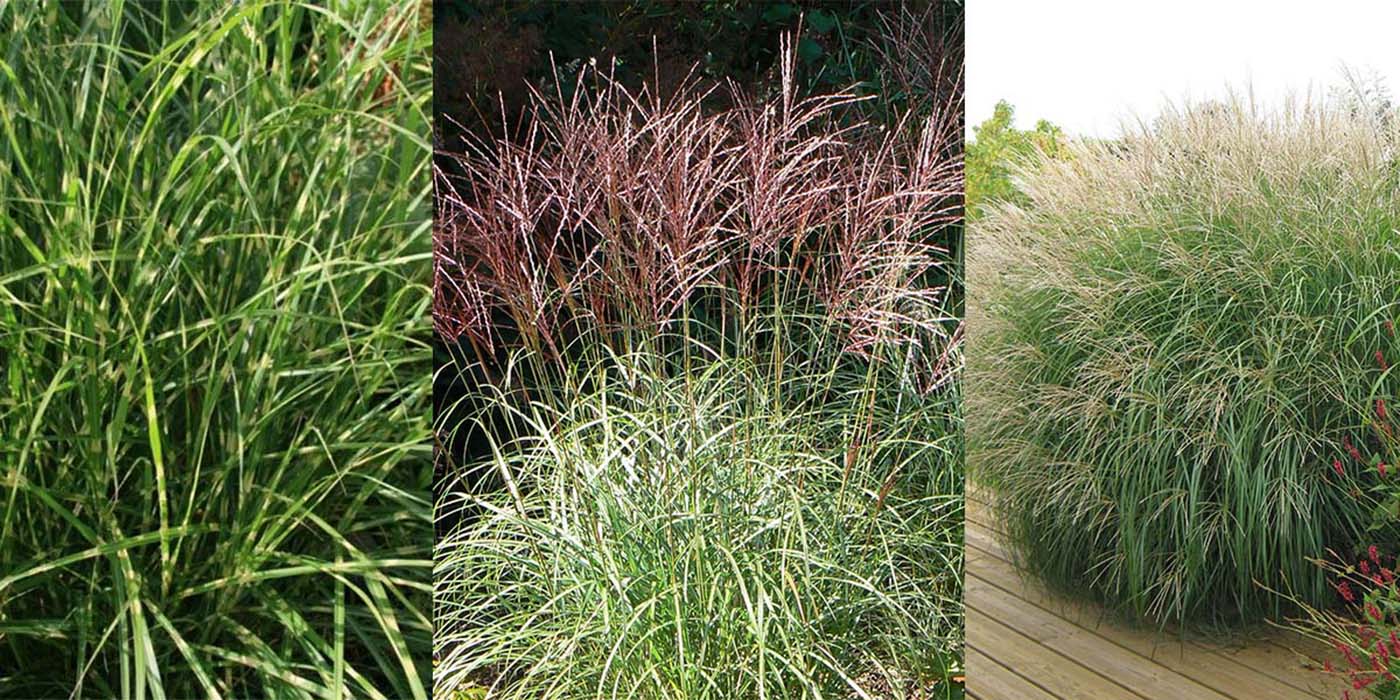


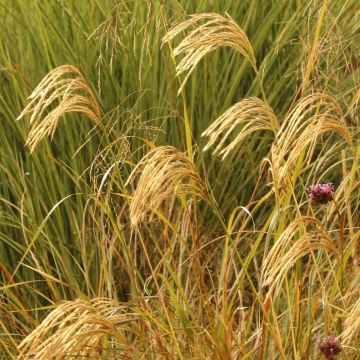

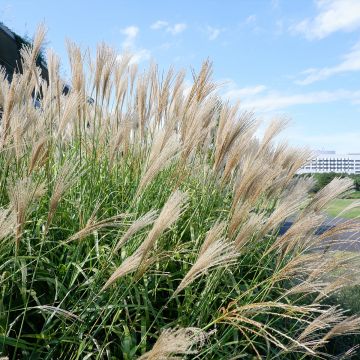

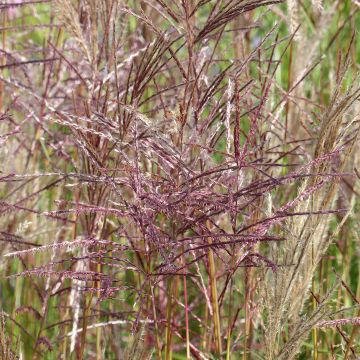
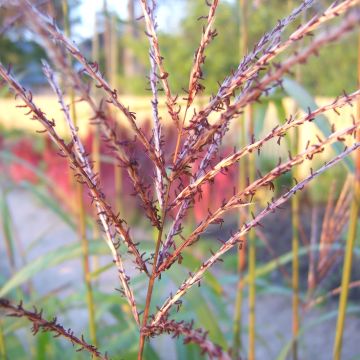
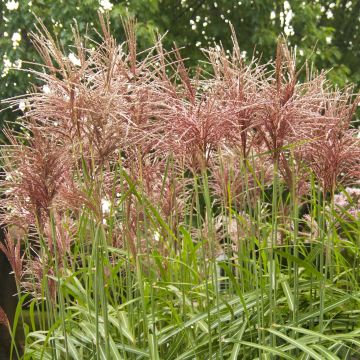
Comments